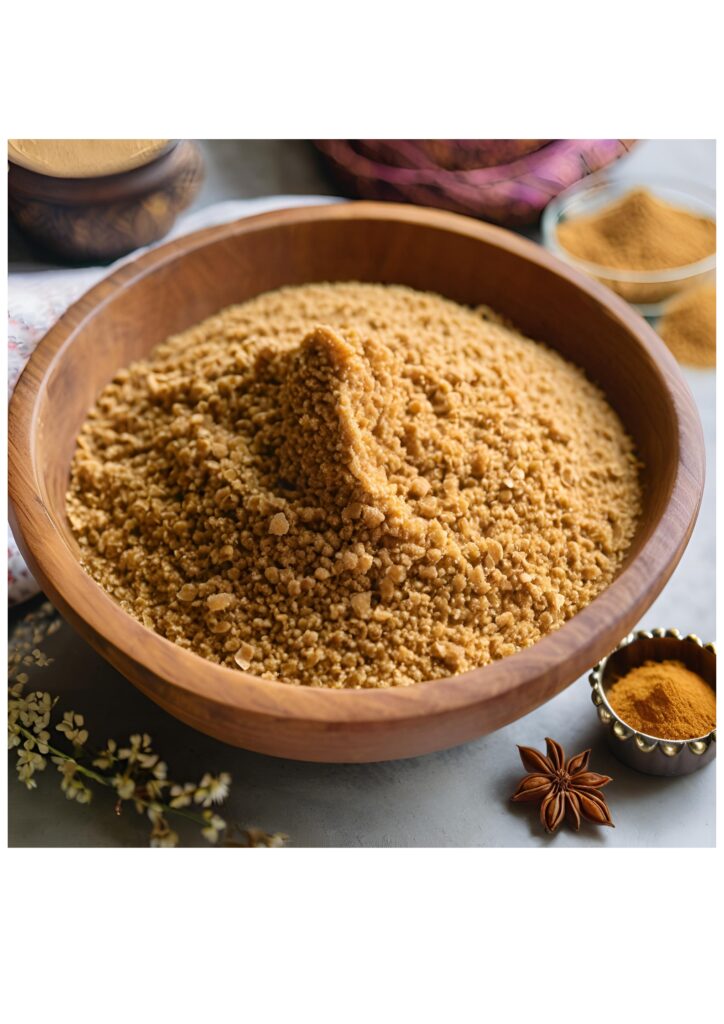
Types of Jaggery: A Guide to the Sweet World of Natural Sugar
Types of jaggery are a fascinating world of natural sweeteners that offer more than just sweetness. When it comes to choosing the right jaggery, understanding the different types of jaggery available can help you make the best choice for your culinary needs and health.
What is Jaggery?
Jaggery is made from sugarcane or palm sap, which is boiled until it thickens and solidifies. Unlike refined sugar, jaggery retains molasses, giving it a distinctive, deep brown color and a complex flavor profile that ranges from caramel to earthy notes. It’s widely used in Indian, African, and Latin American cuisines and is cherished not only for its taste but also for its nutritional benefits. Understanding the different types of jaggery is essential to appreciate its versatility.
1. Sugarcane Jaggery
Sugarcane jaggery is the most common and widely used type. It is made by boiling sugarcane juice until it becomes a thick syrup, which is then cooled and molded into blocks or powder. This type of jaggery has a rich, sweet taste with hints of caramel and a slightly grainy texture.
Uses: Sugarcane jaggery is versatile and can be used in various dishes, from desserts to savory curries. It’s also a popular choice for making traditional sweets like laddoos, chikkis, and payasam.
Benefits: Rich in iron and minerals, sugarcane jaggery is known to aid digestion, purify the blood, and boost energy levels naturally. Among the various types of jaggery, sugarcane jaggery is a staple in many households.
2. Palm Jaggery
Palm jaggery, also known as “karupatti” in Tamil, is made from the sap of palm trees, such as date palms or coconut palms. It is darker and has a more intense flavor compared to sugarcane jaggery. The process involves tapping the sap, boiling it down, and then allowing it to solidify.
Uses: Palm jaggery is commonly used in South Indian cuisine, particularly in dishes like appams, idiyappams, and traditional sweets like kozhukattai. It also serves as a healthier alternative to sugar in coffee or tea.
Benefits: Palm jaggery is loaded with antioxidants, helps in detoxifying the liver, and is considered a good source of essential minerals like magnesium and potassium. This type of jaggery is highly valued among the different types of jaggery for its health benefits.
3. Date Palm Jaggery
Date palm jaggery, also known as “khajur gur” or “nolen gur” in Bengali, is a specialty jaggery made from the sap of the date palm tree. This type is highly prized, especially in the winter months, when the sap is harvested. It has a soft, melt-in-the-mouth texture and a distinct flavor that’s sweeter and more aromatic than other types.
Uses: Date palm jaggery is a key ingredient in many traditional Bengali sweets like nolen gurer sandesh, payesh, and pithe. It can also be used in baking or as a spread on toast.
Benefits: Besides being a natural sweetener, date palm jaggery is rich in vitamins and minerals, and it’s believed to have warming properties, making it ideal for consumption during colder months. Among the types of jaggery, this one stands out for its unique seasonal availability.
4. Coconut Jaggery
Coconut jaggery is derived from the sap of coconut trees. It is similar to palm jaggery but is often lighter in color and has a milder, sweeter taste. The process of making coconut jaggery is similar to that of palm jaggery, but the end product has a more delicate flavor.
Uses: This type of jaggery is commonly used in Southeast Asian and Indian cuisines, particularly in desserts and beverages. It pairs well with coconut milk, making it a popular choice for dishes like kheer and payasam.
Benefits: Coconut jaggery is a natural energy booster, helps in digestion, and is lower on the glycemic index compared to regular sugar, making it a healthier option for diabetics. It’s a popular choice among various types of jaggery for those seeking a mild, sweet taste.
Conclusion
Jaggery is more than just a sweetener; it’s a tradition, a culture, and a health booster packed into one. Whether you prefer the robust flavor of sugarcane jaggery or the unique taste of date palm jaggery, incorporating this natural sugar into your diet is a delicious way to enjoy a touch of sweetness with added health benefits. So, next time you reach for a sweetener, consider one of these types of jaggery for a wholesome, flavorful alternative to refined sugar.